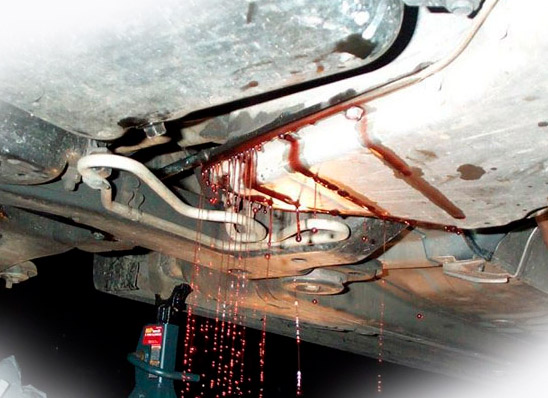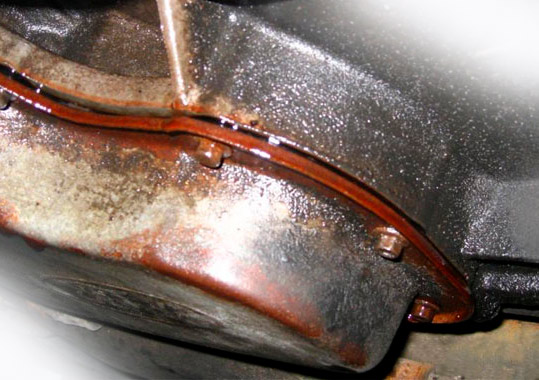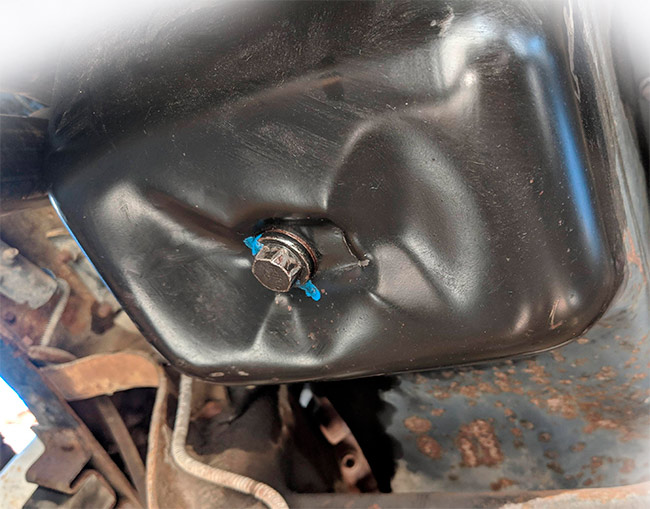Ford makes some of the finest vehicles on the planet, especially trucks and SUVs. However, regardless of how strong and reliable a car might be, something inside of it will break down eventually. In this guide, our focus will be on the transmission, or, rather its pan. Now, it doesn’t really matter if it’s a manual, automatic, or a CVT gearbox. The pan has two important jobs: first of all, it contains the transmission fluid.
Without lubrication, all the mechanical components will wear out in the blink of an eye. On top of that, by removing the pan, you can get quick and easy access to the gearbox (the insides). So, when the pan starts to malfunction, that can lead to all kinds of problems. That’s exactly what we’ll learn about today: common issues, signs, and fixes.
#1: Physical Damage Leads to a Strong Leakage
This might not be too obvious to a regular driver, but the transmission pan is constantly at the risk of being damaged. It is, after all, located right below the chassis, and big enough rocks, pieces of wood, bumps on the road, and even debris can ruin it over time. This is especially true if you do a lot of off-roading on uneven terrain and rocky trails. So, if the object is big enough, and the impact is strong, you’ll end up with a torn apart pan.
 The bad news is – even the tiniest crack in the pan causes a leak. As I mentioned in the intro, without the “life fluid”, heavy friction between the gears and all the other components will lead to transmission failure. The most obvious side effect of a leaking pan is sluggish, slow, and cranky gear shifting. When the gearbox is low on lubrication, it has a difficult time maintaining nominal pressure.
The bad news is – even the tiniest crack in the pan causes a leak. As I mentioned in the intro, without the “life fluid”, heavy friction between the gears and all the other components will lead to transmission failure. The most obvious side effect of a leaking pan is sluggish, slow, and cranky gear shifting. When the gearbox is low on lubrication, it has a difficult time maintaining nominal pressure.
Therefore, if you feel like it isn’t working the way it should, don’t rush to the nearest mechanics. Slide down underneath the vehicle and inspect the pan. Chances are, you’ve got a minor leak that you didn’t even notice, but it was still causing you trouble. Don’t’ postpone this – the sooner you fix the issue, the better.
A quick note: if the leaking is rather severe, and the car has been parked for a couple of hours, you’ll see drops or even a tiny pool of the transmission fluid beneath it. This is a more obvious sign, of course, but can be harder to detect if you don’t carry out regular maintenance.
#2: Faulty Gaskets Result in Minor Fluid Leaks
 Another common cause of leakage is the gasket. Essentially, it’s a relatively small piece of rubber that “sits” right between the transmission and the pan. The experts recommend changing the gasket every 40-60K miles or so to make sure the factory one isn’t worn out. So, why should you be concerned about it if maintenance isn’t due yet? Well, sometimes, gaskets get damaged, even if you only drive on smooth highways.
Another common cause of leakage is the gasket. Essentially, it’s a relatively small piece of rubber that “sits” right between the transmission and the pan. The experts recommend changing the gasket every 40-60K miles or so to make sure the factory one isn’t worn out. So, why should you be concerned about it if maintenance isn’t due yet? Well, sometimes, gaskets get damaged, even if you only drive on smooth highways.
Bad alignment, low-quality materials/manufacturing, and, most likely, overheating can cause it to literally crack. Rubber isn’t the most heat- or tear-resistant material, keep that in mind. The good news is – gaskets are available for cheap and it won’t take you more than 5-10 minutes to replace the faulty padding slash lining. The symptoms are the same as in the previous example: a struggling transmission and erratic performance.
This one is a bit harder to notice, however, because no matter how damaged the gasket might be, the leak won’t be as strong as in the case of a damaged pan.
#3: Denting Can Cause Overheating
 Did you know that the pan is holding +/- 50% of the transmission fluid? In a way, it’s like the golden reserve: there’s always more of the fluid than the gearbox needs. Besides, when the lube is rushing through the transmission system, it gets hot. All those gears working hard to get the vehicle going can reach extreme temperatures. But, thanks to the design of the pan, the liquid cools down when it circles through it.
Did you know that the pan is holding +/- 50% of the transmission fluid? In a way, it’s like the golden reserve: there’s always more of the fluid than the gearbox needs. Besides, when the lube is rushing through the transmission system, it gets hot. All those gears working hard to get the vehicle going can reach extreme temperatures. But, thanks to the design of the pan, the liquid cools down when it circles through it.
Yes, you could call this a precautionary measure against overheating – one of the biggest problems for any mechanism. Earlier, we talked about the consequences of a damaged/leaking pan. But sometimes, it gets deformed and dented instead. In that case, the most common symptom/side effect is gonna be overheating. This has to do with the damaged pan’s limited capacity to keep the heated fluid cool.
Replacing the pan is the best course of action here. Repairing it will probably cost you more time, energy, and money. Besides, dents can’t really be fixed. Most modern cars notify the driver whenever the transmission reaches a dangerous level. Usually, it’s a warning light (different colors depending on how big of a problem you’re facing). Yellow means there’s something wrong; if you see red, it would be best to stop the car immediately.
Otherwise, the transmission might start to burn, which can (potentially) also damage the engine, the battery, and other core systems.
Conclusion
Alright, that pretty much covers it. The transmission pan may not seem like much, but it has a very important job, and that’s keeping the fluid nice and cool. And, as we learned today, even minor damage to it can lead to all kinds of undesired consequences. So, keep your eye on it, and don’t underestimate the importance of maintenance.
The best thing about the transmission pan – it doesn’t cost a lot and can be replaced with basic tools in your garage. No expensive auto shop services will be required. The gearbox fluid is very affordable as well. So, I highly recommend changing it every 30-60K miles. And if you drive around the city a lot and haul heavy stuff daily, a fluid change will be due even sooner (like every 20K miles or so).



